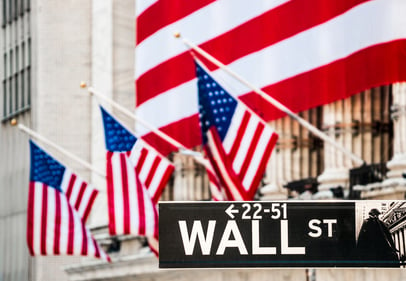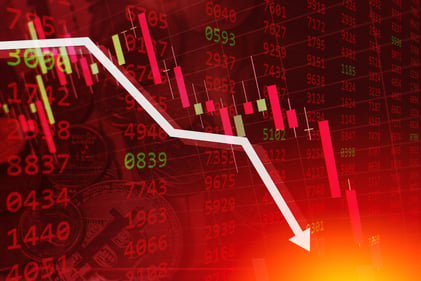How To Invest Money In Dow Jones
Dow Jones Industrial Average
Updated: Oct. 28, 2021, 10:06 a.m.
What is the Dow Jones Industrial Average Stock Index?
The Dow Jones Industrial Average (DJINDICES:^DJI) is a stock index that tracks 30 of the largest U.S. companies. Created in 1896, it is one of the oldest stock indexes, and its performance is widely considered as a useful indicator of the health of the entire U.S. stock market. The Dow Jones Industrial Average index is managed by S&P Dow Jones Indices, a joint venture that is majority-controlled by the financial information and analytics company S&P Global (NYSE:SPGI).
The Dow Jones Industrial Average is an index of not only stocks in the industrials sector; it includes stocks from most sectors and industries, except for utilities and transportation, which are measured by other indexes such as the Dow Jones Transportation Average (DJINDICES:^DJT). The Dow Jones Industrial Average is, according to S&P Global, a "world-renowned gauge of the U.S. equity market." Most Dow Jones Industrial Average-listed companies trade on the New York Stock Exchange.
Can you buy Dow Jones stock? How?
You can't buy stock in the Dow Jones Industrial Average itself, but you can gain portfolio exposure to the performance of the Dow and the companies included in the index. Your investment options include:
- Buy shares of all 30 companies included in the Dow Jones Industrial Average. With only 30 companies in the index, it's feasible to directly purchase the stock of each. Most brokers don't charge commissions on trades and many allow fractional share investments, meaning that you can buy partial shares. This investment alternative requires you to manage 30 separate stocks and also make changes to your portfolio whenever the index changes (although, historically, the index changes only every couple of years).
- Buy shares in a Dow-focused ETF. Exchange-traded funds that track the Dow's performance, such as the SPDR Dow Jones Industrial Average ETF (NYSEMKT:DIA), easily provide portfolio exposure to the 30 companies listed by the Dow. Buying shares in an ETF is simpler than investing in 30 separate companies, and you are not obligated to make changes to your portfolio when the companies listed by the Dow change. As with most ETFs, an annual expense ratio -- management fee -- is assessed by this SPDR ETF. The expense ratio of 0.16% equates to a fee of $1.60 per year for every $1,000 invested.
- Invest in Dow options or futures contracts. You can buy Dow options contracts through the Cboe Global Markets (NYSEMKT:CBOE) options exchange and Dow futures contracts using the CME Group's (NASDAQ:CME) Chicago Mercantile Exchange. These types of securities are best suited for investors with advanced investing knowledge and experience since options and futures can be lucrative but also can generate substantial losses.
For novice investors who want portfolio exposure to a wide range of sectors through familiar large-cap stocks, the companies of the Dow Jones Industrial Average represent a good starting point for your research. That's especially true if you're seeking to invest in blue chip companies, which are generally the most stable and profitable.
A brief history of the Dow Jones Industrial Average
The Dow Jones Industrial Average was established on May 26, 1896, by Charles Dow, a reporter for The Wall Street Journal who founded Dow Jones & Company in 1882 with fellow journalists Edward Jones and Charles Bergstresser.
Initially the Dow Jones Industrial Average was an index of 12 companies. Most of the original companies were industrial companies, including General Electric (NYSE:GE). Over time, as the focus of the index shifted from measuring the performance of the heavy industrial sector to gauging the health of the entire U.S. stock market, the number of stocks in the index expanded. The index has been tracking the stocks of 30 companies since 1928.
Companies in the Dow Jones Industrial Average
There are 30 stocks in the Dow Jones Industrial Average:
- 3M (NYSE:MMM)
- American Express (NYSE:AXP)
- Amgen (NASDAQ:AMGN)
- Apple (NASDAQ:AAPL)
- Boeing (NYSE:BA)
- Caterpillar (NYSE:CAT)
- Chevron (NYSE:CVX)
- Cisco Systems (NASDAQ:CSCO)
- Coca-Cola (NYSE:KO)
- Disney (NYSE:DIS)
- Dow (NYSE:DOW)
- Goldman Sachs (NYSE:GS)
- Home Depot (NYSE:HD)
- Honeywell International (NYSE:HON)
- IBM (NYSE:IBM)
- Intel (NASDAQ:INTC)
- Johnson & Johnson (NYSE:JNJ)
- JPMorgan Chase (NYSE:JPM)
- McDonald's (NYSE:MCD)
- Merck (NYSE:MRK)
- Microsoft (NASDAQ:MSFT)
- Nike (NYSE:NKE)
- Procter & Gamble (NYSE:PG)
- Salesforce (NYSE:CRM)
- Travelers (NYSE:TRV)
- UnitedHealth Group (NYSE:UNH)
- Verizon (NYSE:VZ)
- Visa (NYSE:V)
- Walmart (NYSE:WMT)
- Walgreens Boots Alliance (NASDAQ:WBA)
How is the value of the Dow Jones Industrial Average calculated?
While most stock market indexes are weighted by market capitalization -- equal to share price times the number of shares outstanding -- the Dow Jones Industrial Average is price-weighted instead. The value of the Dow Jones Industrial Average is calculated by determining the average value of the stock prices of the 30 listed companies.
But calculating that average value is not as simple as totaling the 30 stock prices and dividing by 30.
Mergers, spinoffs, stock splits, and other developments complicate the arithmetic and require a committee to formally determine a "Dow divisor" -- the denominator by which the sum of the 30 share prices is divided. As of March 31, 2021, the Dow divisor was 0.159871. Using this divisor, you can calculate the value of the Dow Jones Industrial Average by summing the share prices of all 30 Dow companies and dividing that amount by 0.159871.
While any change in the share price of any Dow-listed company affects the value of the index equally, in accordance with Charles Dow's original vision, it's important to realize that, on a percentage basis, the movements of the highest-priced stocks have the greatest impact on the index's value.
For example, as of March 31, 2021, the highest-priced stock on the Dow, trading at $372.07, was that of UnitedHealth Group. The lowest price stock, trading at $51.71, was that of Cisco Systems. With UnitedHealth's stock price 7.2 times greater than that of Cisco's, the Cisco share price would have to change by 7.2% in order to have the same impact on the value of the Dow as a change of only 1% in the price of UnitedHealth Group stock.
The Dow Jones Industrial Average vs. the S&P 500 and the Nasdaq Composite
The Dow Jones Industrial Average is just one of three major indexes that many investors use to measure the performance of the stock market. The other two are the S&P 500 (SNPINDEX: ^GSPC) and the Nasdaq Composite (NASDAQINDEX: ^IXIC).
The S&P 500 is an index of 500 large-cap stocks that are chosen using certain criteria, such as market cap and profitability, by a committee of the S&P Dow Jones Indices. The Nasdaq index tracks more than 2,500 stocks, or almost every stock traded on the Nasdaq Exchange.
Unlike the Dow, the S&P 500 and the Nasdaq are market capitalization-weighted, meaning that the most valuable companies influence the indexes' values the most. Both the S&P 500 and the Nasdaq are more heavily weighted toward technology stocks than the Dow, and the Nasdaq has the most tech exposure of all three indexes.
The stocks of tech giants such as Amazon (NASDAQ: AMZN), Alphabet (NASDAQ: GOOGL), Facebook (NASDAQ: FB), and Tesla (NASDAQ: TSLA) aren't included in the Dow, but they are major components of the S&P 500 and the Nasdaq. The Dow arguably underweights the tech sector and is more weighted than its peers toward cyclical sectors such as financial services and heavy industry. Despite these differences, the Dow and the S&P 500 tend to perform similarly.
Most professional investors primarily monitor the performance of the S&P 500 because it includes a broad range of stocks and is weighted by market cap, which is a more accurate way to measure the overall health of the stock market. The Dow Jones Industrial Average may not be as comprehensive or precise as the S&P 500 or a total market index such as the Wilshire 5000, but this long-standing index still indicates the stock market's overall direction and functions as a short list of some of the most powerful companies in the U.S.
Other Major Market Indexes
S&P 500 Index
Tracks slightly over 500 of the largest U.S. stocks
Nasdaq Composite
Tracks every stock traded on the Nasdaq stock market exchange
Russell 2000 Index
Tracks 2,000 small-cap and mid-cap stocks
Stock Market Indexes
Take a bird's eye look at all four major indexes.
FAQs
What is the Dow Jones?
The Dow Jones Industrial Average is a stock index that tracks 30 of the largest U.S. companies. Created in 1896, it is one of the oldest stock indexes, and its performance is widely considered as a useful indicator of the health of the entire U.S. stock market.
What are stock market indexes?
A stock market index shows how investors feel an economy is faring. An index collects data from a variety of companies across industries. Together, that data forms a picture that helps investors compare current price levels with past prices to calculate market performance.
What is the S&P 500?
The S&P 500 (also known as the Standard & Poor's 500), a registered trademark of the joint venture S&P Dow Jones Indices, is a stock index that consists of the 500 largest companies in the U.S. It is generally considered the best indicator of how U.S. stocks are performing overall.
Recent articles

3 Dividend Stocks That Should Pay You the Rest of Your Life
Are you in search of stocks whose dividends could outlast you? Here are three stocks to think about purchasing.
Kody Kester | Nov 9, 2021

Home Depot Q3 Earnings Preview: Will Remarkable Sales Growth Continue?
The home-improvement retailer is scheduled to report third-quarter earnings on Nov. 16.
Parkev Tatevosian | Nov 9, 2021

2 Tech Dividend Stocks to Buy in November
Pick up these fast-paced tech companies before they get away from you this month.
Rich Duprey | Nov 9, 2021

Could This Financial Stock Reach $1,000 Within 5 Years?
Will strong earnings, excellent management, and lots of growth opportunities translate into big gains for investors?
Matthew Frankel, CFP® | Nov 9, 2021

3 Dow Stocks That Are Screaming Buys in November
The Dow Jones Industrial Average is home to a trio of deeply discounted value stocks.
Sean Williams | Nov 9, 2021

Caterpillar Leads Dow Jones Up 116 Points on $1 Trillion Infrastructure Deal
Congress finally passed a bipartisan infrastructure spending bill that investors expect will boost spending for Caterpillar's equipment.
Jason Hall | Nov 8, 2021

Why Tesla Stock Fell on Monday
Should investors be concerned about Elon Musk's proposal to sell 10% of his Tesla stake?
Daniel Sparks | Nov 8, 2021

Goldman Sachs Crushes Expectations Once Again
The investment banking giant continues to perform at a very high level.
Matthew Frankel, CFP® | Nov 8, 2021

Here's Why Merck Stock Vaulted Higher in October
The pharma giant's stock took flight last month after its oral COVID-19 therapy hit the mark in a pivotal trial.
George Budwell | Nov 8, 2021

3 Stocks to Avoid This Week
These investments seem pretty vulnerable right now.
Rick Munarriz | Nov 8, 2021
You might like:
How To Invest Money In Dow Jones
Source: https://www.fool.com/investing/stock-market/indexes/dow-jones/
Posted by: browntherear68.blogspot.com

0 Response to "How To Invest Money In Dow Jones"
Post a Comment